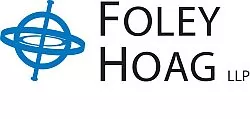- within International Law topic(s)
- with Inhouse Counsel
- in United States
- with readers working within the Oil & Gas and Law Firm industries
Key Takeaways:
- The E.U.'s proposal would significantly tighten steel import rules by reducing tariff-rate quotas by 47%, doubling tariffs from 25% to 50% and introducing a new "melt and pour" requirement.
- Affected countries should review the proposal and explore how they can best protect domestic interests; the E.U. has signaled its intention to engage with trading partners over specific allocations.
- E.U. businesses, as well as foreign steel manufacturers and exporters, should analyse the effects of the proposal on their operations and prepare strategies to minimize repercussions.
On 7 October 2025, the European Commission
(Commission) released its proposal for a new steel safeguard plan
(proposal).
Once adopted, the proposal will significantly strengthen protective
measures compared to the previous steel safeguard regime,
introduced in 2019 and since updated on several occasions. The
proposal envisages reductions to tariff-free import volumes by
approximately half and doubles the out-of-quota duty from 25% to
50%. Quotas will be allocated by country, and the proposal
contemplates that eligibility for country-specific quotas will be
limited by a "Melt and Pour" requirement, under which
importers will have to provide evidence of the country in which the
steel was originally produced. The key changes are summarised in
the table below:
| Measure | Previous Regime (2019 Safeguard) | Proposed Regime (2026 Safeguard) | Comments |
|---|---|---|---|
| Basis for tariff quota volumes | The average of 2015-2017 imports plus 5% | 2013 import share of total EU consumption | The Commission argues that 2013 was the last year before global overcapacity developed |
| Basis of the country-specific allocations of the tariff quota | The average of 2015-2017 imports | 2013 imports, subject to negotiations in view of FTA agreements, etc. | Countries in exceptional situations (e.g., Ukraine) will
receive a special tariff-free quota. Under the 2019 safeguard, the
country-specific allocation only applied to certain products Access to country-specific allocations will be limited to steel products in which basic steel was melted and poured in the country. |
| Out-of-quota tariff | 25% | 50% | N/A |
| Tariff-free import volume | 30.5 million tonnes | 18.3 million tonnes | The portion of the tariff-free import volume attributable to Russia and Belarus will not be allocated. Actual tariff-free import volume may be closer to 15.5 million tonnes |
Whilst the reduction in the tariff-free quota and the tariff hike will impact all importers, increasing downstream prices and the competitiveness of local production, the Commission's use of 2013 imports as a benchmark and introduction of a "Melt and Pour" rule will have more varied effects on source countries and their exporters. Countries with materially different import levels between 2013 and the 2015-2017 reference periods, or that process and export steel products using basic steel sourced elsewhere, are likely to see significant shifts should the proposed approach be applied strictly.
The Commission has indicated though that it will engage with trading partners to determine country-specific allocations. Countries that have free trade agreements (FTAs) with the E.U., such as the Republic of Korea, are reportedly already seeking to negotiate bespoke allocations.
Affected countries, and foreign steel manufacturers and exporters, should carefully review this proposal to understand the implications of these changes for their interests and to determine strategies to minimize negative impacts.
E.U. businesses, especially those reliant on foreign steel imports for specialized applications such as aerospace and defence, should also analyse how lower overall in-quota volumes, higher out-of-quota tariffs and different country allocations affect structural considerations in their supply chains as well as future pricing strategies.
The proposal will now pass before the European Parliament and the Council as part of the ordinary legislative procedure. It is expected to take effect on 1 July 2026, once the current safeguard expires. Foley Hoag's E.U.-based team is available if you have any questions on these matters.
Law clerk Thomas Hilditch contributed to this alert.
The content of this article is intended to provide a general guide to the subject matter. Specialist advice should be sought about your specific circumstances.



